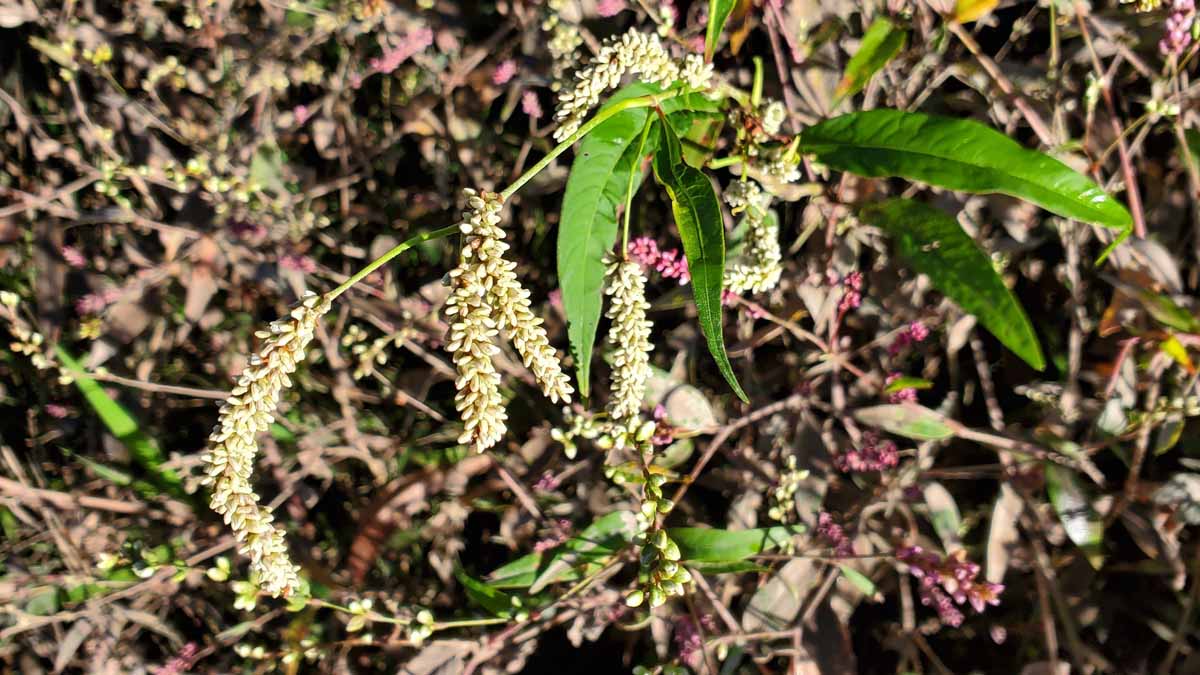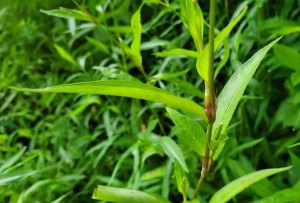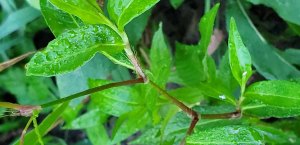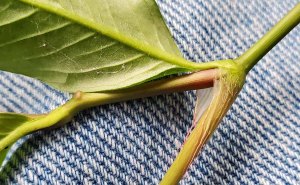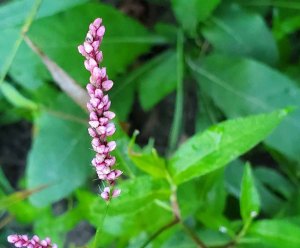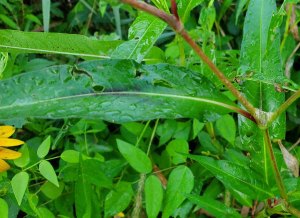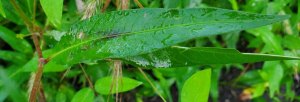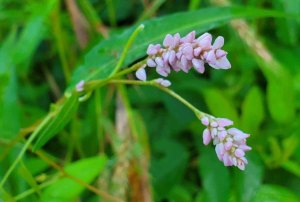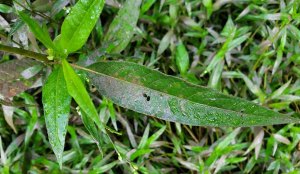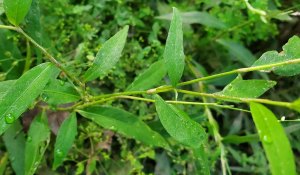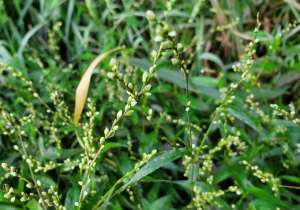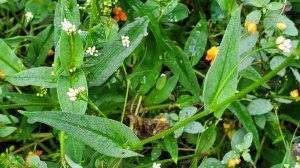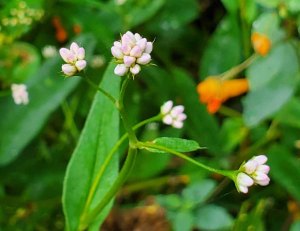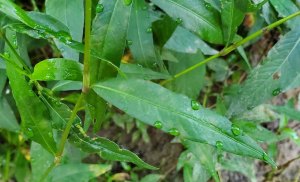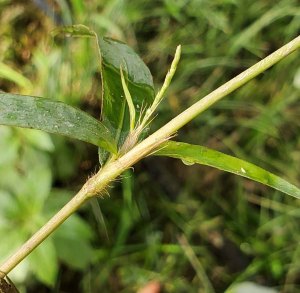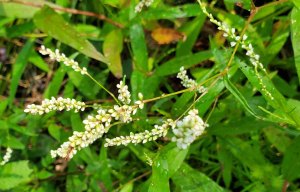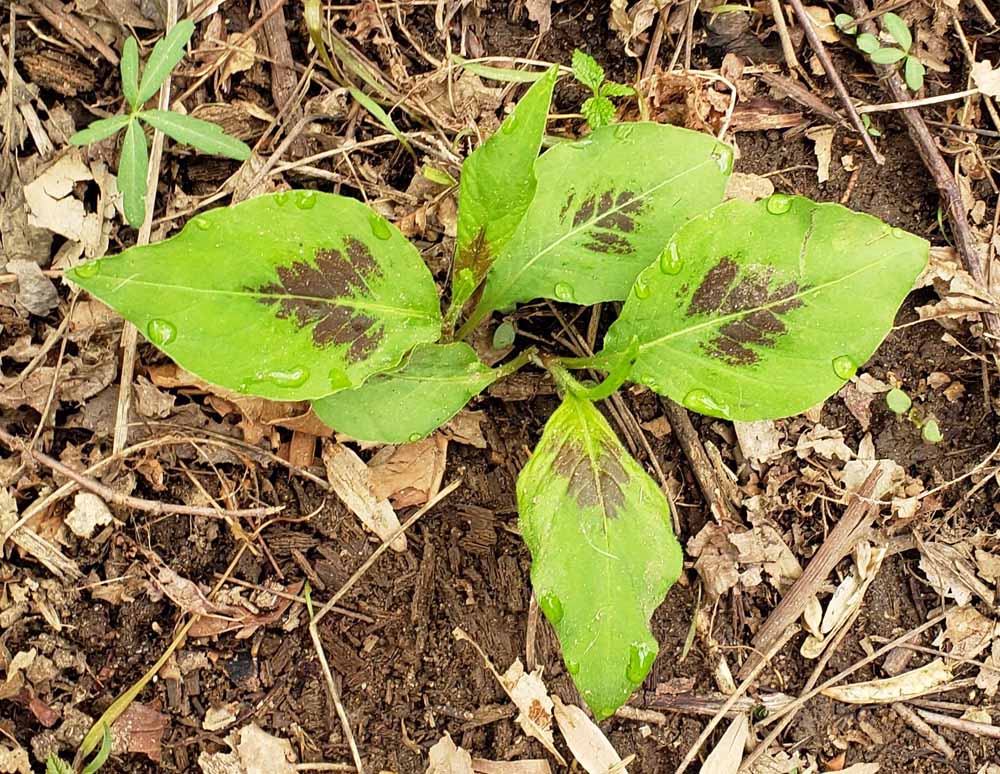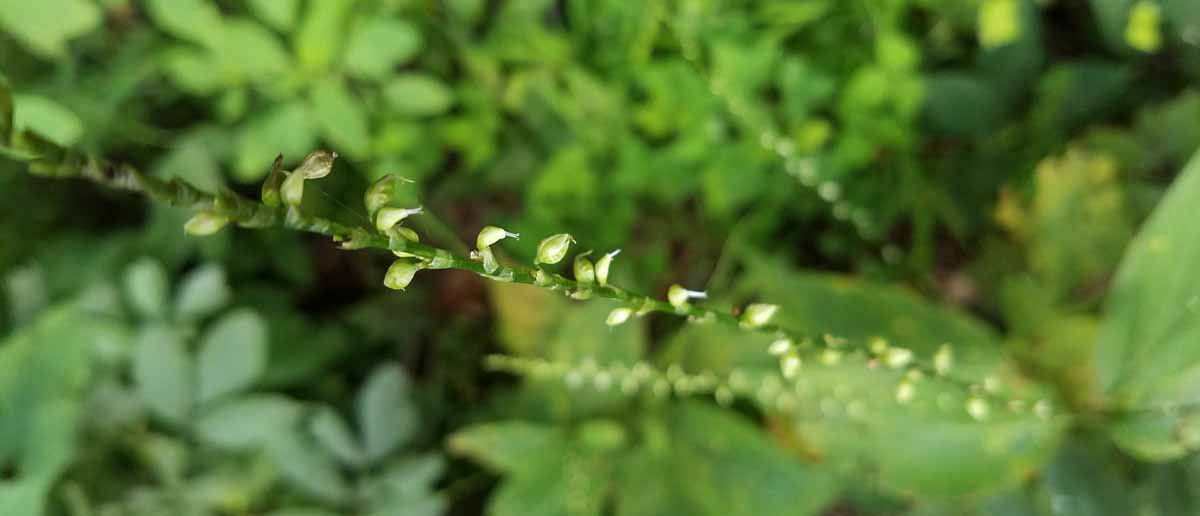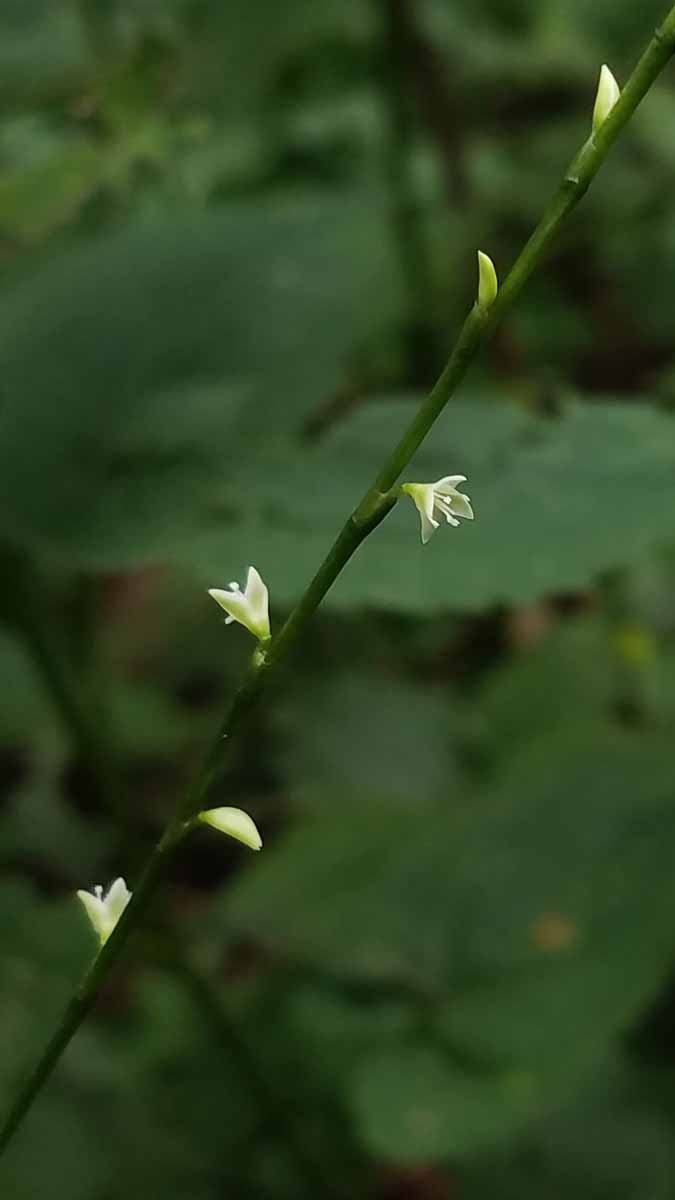Walking Oklawaha Greenway as many days as I have this past COVID -19 season, I began to notice that there were several Smartweeds, especially in the wetter areas. I decided to look a little further, the operative word being “little”, into the Smartweed family. The Smartweeds are in the Persicaria genus and I found several other species that were familiar to me. All I wanted to do was to be able to label my photos, so I built a cheatsheet for myself which I share as follows (click on any picture to zoom):
Water Smartweed (Persicaria amphibia)
- Rare in the Carolinas
- Its adaptations to differing water conditions make it quite variable
- Pink flowers in a dense cluster of erect spikes
- Ocreae (cylindrical sheaths surrounding the stem at the leaf joints) are transparent, appearing light green, light tan, or brown, depending on their age. Upper rims of these ocreae curl outward, and often have a wavy edge. The ocreae are covered with spreading bristly hairs
- Stems of terrestrial plants are light green, yellowish green, or reddish green, glabrous to pubescent, relatively stout, and terete. In the aquatic form of this plant, the stems and ocreae are similar, except they are less hairy or glabrous
- Leaf shape is lanceolate-oblong or elliptic-oblong with obtuse tips and rounded bases
- Derivation of Scientific Name: From persica for “peach”, referring to the shape of the leaf & “amphibious” meaning it can survive on land or water
Water Pepper (Persicaria hydropiper*)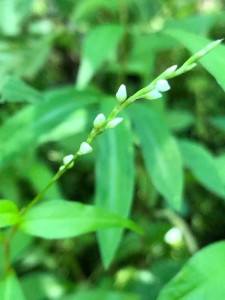
- Common. Non-native to North America
- The inflorescence is a nodding spike of white or pink flowers
- The ocreae are loose and fringed at the upper ends
- The leaves are alternate and almost stalkless
- The leaf blades are narrowly ovate and have entire margins fringed by very short hairs. They are tapering with a blunt apex
- The fruit is a dark brown oval, flattened nut
- Derivation of Scientific Name: From the Latin hydro for “water” and piper for “pepper”. The leaves have a strong peppery taste
Mild Water Pepper (Persicaria hydropiperoides) 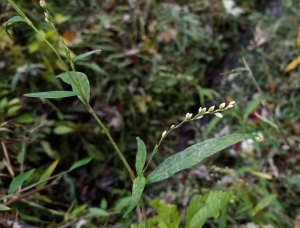
- Common
- Green to red to white flowers without dotted glands in erect spikes with gaps between clusters
- Leaves are usually less than 0.6″ wide, 3.5 or more times longer than wide
- Derivation of Scientific Name: Resembling hydropiper
Pale Smartweed (Persicaria lapathifolia)
- Uncommon
- White flowers in an arching & drooping spike
- Ocreae 0.4-1.2″ long, not ciliate, glabrous or minutely strigillose on the nerves. Brownish, cylindric, chartaceous, base inflated, margins truncate
- Leaves often with a triangular reddish blotch in the middle of the upper surface
- Derivation of Scientific Name: From lapathium meaning “with leaves like sorrel or dock”
Long-bristled Smartweed (Persicaria longiseta*)
- Common. Non-native to North America
- Deep reddish-pink flowers on erect terminal spikes only 0.2″ wide
- Racemes interrupted at least near the base
- An erect non-native annual with smooth, ridgeless stems. The cilia on the ocreae are unmistakable: 1/4″ to 3/8″ long
- Leaves smooth above, sparsely hairy on veins below, elliptic to lance-shaped. Base of the leaf is wedge-shaped, petiole less than 0.2″ long.
- Derivation of Scientific Name: Meaning ” long-bristled”
Spotted Lady’s-thumb (Persicaria maculosa*)
- Common. Non-native to North America
- Pink flowers on erect spikes
- Similar to P. longiseta, but cilia on the ocreae are shorter
- Leaves have a purplish triangle in the middle, like a thumbprint
- Derivation of Scientific Name: Meaning ” spotted”
Pink Smartweed (Persicaria pensylvanica)
- Common
- An erect, branching annual to 4′ tall
- Pale pink flowers in tight, erect cylindrical racemes, 1-2″ long and 0.5″ wide
- Ocreae not ciliate, paper-like
- Stems have a tendency to zigzag between the alternate leaves
- Upper stem has numerous hairlike glands
- Leaves up to 5″ long
- Derivation of Scientific Name: From “found in Pennsylvania”
Dotted Water Smartweed (Persicaria punctata)
- Common
- Flowers white or green, borne in erect, interrupted racemes
- The calyx (sepals) is conspicuously dotted with glands
- Ocrea brown, not ciliate
- Leaf blade without dark blotch, lanceolate to lanceolate-ovate or subrhombic
- Derivation of Scientific Name: Meaning “spotted”, referring to the gland-dotted calyx
Arrow-leaved Tearthumb (Persicaria sagittata)
- Common
- Flowers white or pink in small rounded heads
- Leaves narrowly arrow-shaped, 1-3″ long
- Sharp backward-turned prickles on stems & midveins of leaf undersides
- Derivation of Scientific Name: Meaning “arrow”
Swamp Smartweed (Persicaria setacea)
- Common
- Dense racemes with greenish to pinkish or whitish flowers
- Ocreae hairy & spreading
- Leaves lacking a triangular reddish blotch
- Resembles P. hydropiperoides, except has more densely flowered racemes, wider leaves, & ocreae with longer cilia & spreading hairs
- Derivation of Scientific Name: Meaning “bristled”
Jumpseed; Virginia Knotweed (Persicaria virginiana)
- Common
- White flowers strung out along a slender terminal spike up to 18″ long
- Ocreae covered with hairs
- Leaves usually marked with a purplish/blackish, inverted “V” towards the base
- Derivation of Scientific Name: From “found in Virginia”
Plants that are non-native to North America are indicated by an asterisk (*) placed after the species name.
Sources: Note – many of the texts refer to Persicaria species by their previous genus name, Polygonum
Borgfeldt, Ken: Smartweed Cheatsheet. Shortia XXXII (3): 7-11, Fall 2020
Horn, Dennis; Cathcart, Tavia; Hemmerly, Thomas E.; & Duhl, David: Wildflowers of Tennessee the Ohio Valley and the Southern Appalachians: The Official Field Guide of the Tennessee Native Plant Society. Lone Pine Publishing, p. 82-84, 2005
Newcomb, Lawrence: Newcomb’s Wildflower Guide. Little Brown, 1989
Peterson, Roger Tory & McKenny, Margaret: A Field Guide to Wildflowers: Northeastern and North-central North America. Peterson Field Guides, p. 276, 1968
Radford, Albert E. Ahles, , Harry E. & Bell, C. Ritchie: Manual of the Vascular Flora of the Carolinas. The University of North Carolina Press, p.406-412, 1968
Smith, Richard M.: Wildflowers of the Southern Mountains. University of Tennessee Press, p. 32-34, 1998
Alan S. Weakley & S.E. Flora Team: Flora of the Southeastern United States. Key to Persicaria. UNC Herbarium, 2023.

